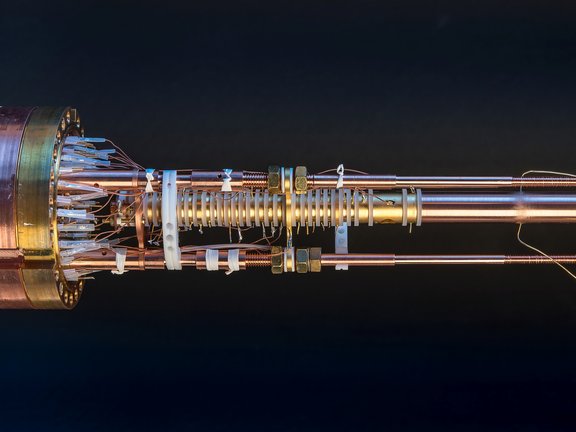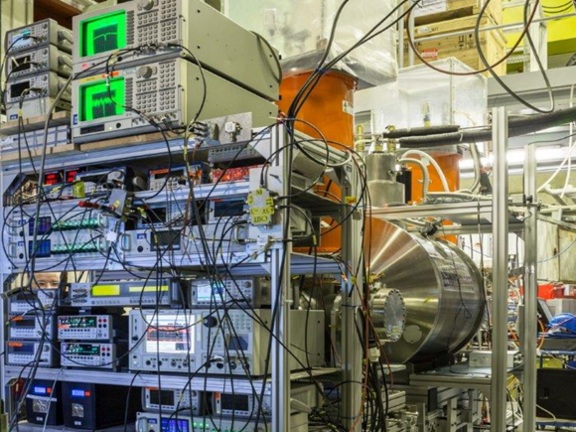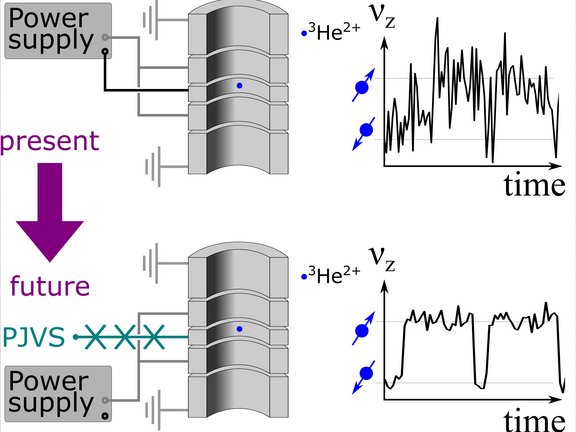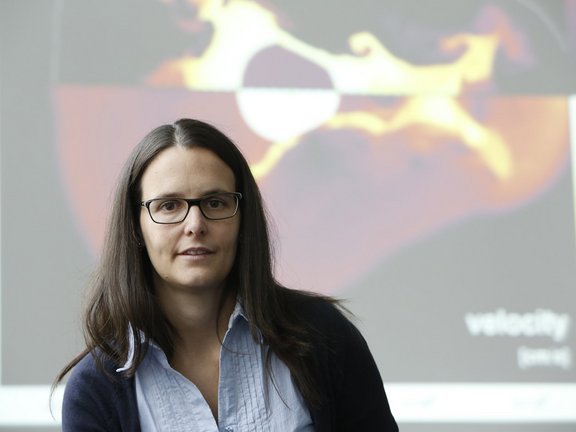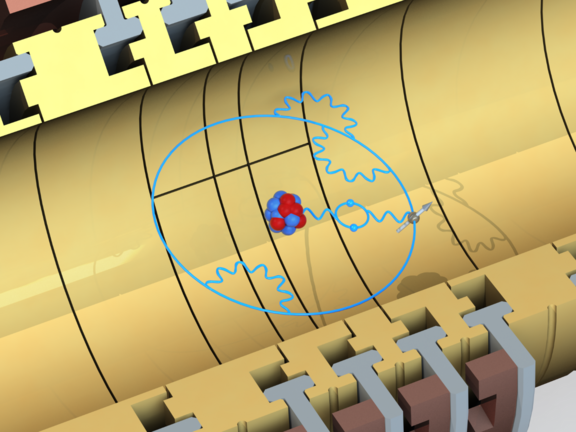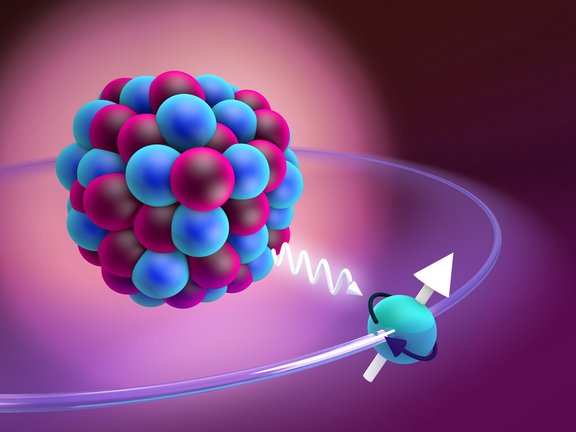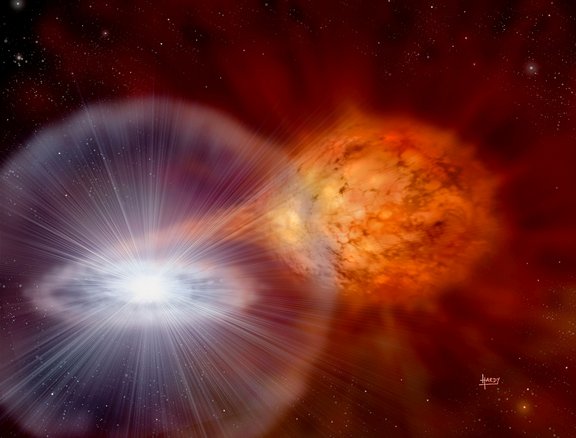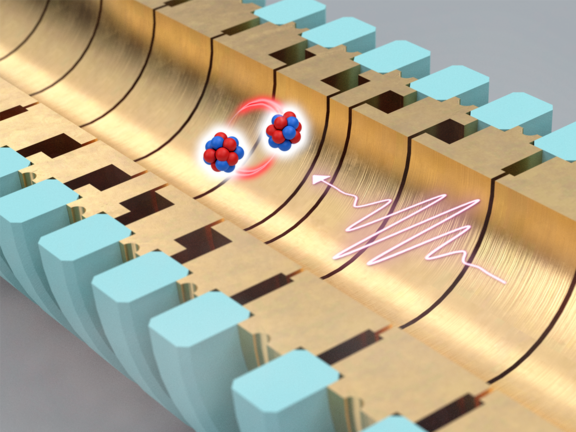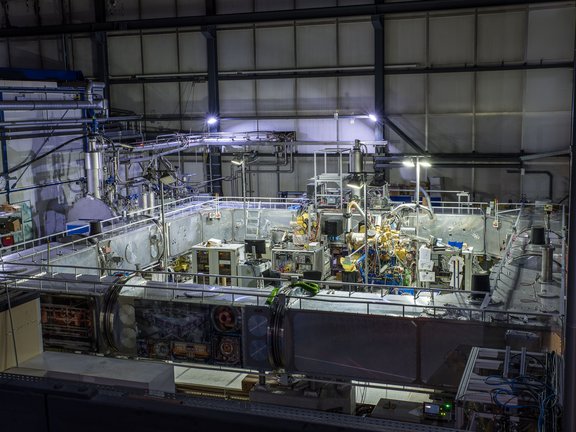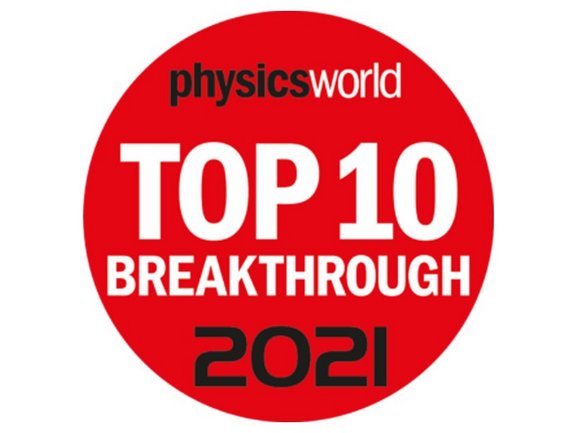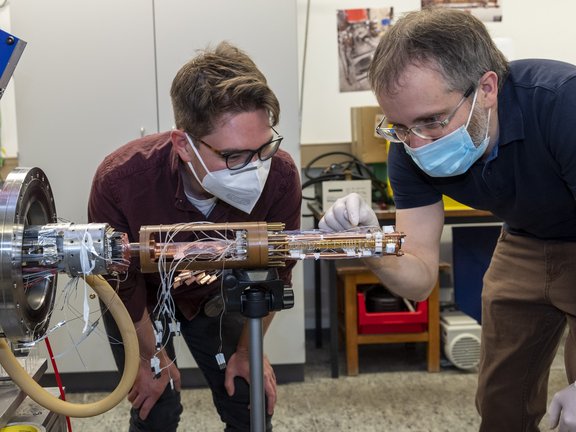News Division Blaum
Through the spaceship atom's shield
Part of the science fiction genre is the famous protective shield that spaceships can raise. This is similar for atoms: The electron shell as an…
BASE Collaboration sets records in particle cooling
Major improvements in cooling of charged particles in Penning traps by the BASE Collaboration.
Unexpected deviation in the lifetime – First observation of the nuclear two-photon decay in bare atomic nuclei
For the first time, an international research team, led by GSI/FAIR in Darmstadt, the Institut de recherche sur les lois fondamentales de l'Univers…
Cold astrochemistry traced in the lab
Pioneering measurements of cold ion-neutral collisions at the Cryogenic Storage Ring reveal an unexpected isotope effect. [Phys. Rev. Lett. / Phys.…
Increased precision in ion trap enables unprecedented measurement accuracy
Scientists led by the Max-Planck-Institutes für Kernphysik have succeeded in significantly increasing the measurement stability of a Penning trap.
Ghost particle on the scales
What is the mass of a neutrino at rest? This is one of the big unanswered questions in physics. Neutrinos play a central role in nature. A team led by…
Klaus Blaum new member of the Leopoldina
The Presidium of the "German Academy of Sciences Leopoldina - National Academy of Sciences" has elected Prof. Dr Klaus Blaum, Director at the Max…
Almudena Arcones Max-Planck-Fellow at MPIK
Origin of heavy elements: Nuclear matter under extreme conditions
Test of quantum electrodynamics and world record mass measurement
Researchers at the MPI for Nuclear Physics have succeeded in testing the theory of quantum electrodynamics in strong fields with unprecedented…
Towards the next-generation atomic clock
Joint experimental-theoretical study at MPIK identifies a metastable state in highly charged lead
German-Japanese cooperation for highest precision extended
They have done a good job, and their cooperation will be continued: After a successful review, the German-Japanese Center for Time, Constants and…
How cosmic rays influence space chemistry - cold molecular ions measured in the Laboratory
Scientists from the Max-Planck-Institut für Kernphysik and other institutions have obtained a significantly higher ionization rate in dilute molecular…
Precise testing of quantum electrodynamics
Measurement of the g factor of the electron in hydrogen-like tin confirms the standard model of particle physics under extremely high electric field…
How heavy is an alpha particle?
Using the high-precision Penning trap for light ions (LIONTRAP), physicists from the Max Planck Institute for Nuclear Physics, the GSI Helmholtz…
Harnack Medal for Daniel Zajfman
The Max Planck Society honours Daniel Zajfman with the Harnack Medal in recognition of his remarkable contributions to the advancement of science and…
The role of Ge-64 in rp-nucleosynthesis powering cosmic X-ray bursts
New nuclear physics data provide a better understanding of the properties of neutron stars. High-precision measurements of nuclear masses reveal…
ERC Advanced Grant awarded to MPIK-group leader Sven Sturm
Priv. Doz. Dr. Sven Sturm has been awarded one of the prestigious ERC Advanced Grants in the latest round of calls for proposals by the European…
News about the methylidine ion’s chemistry in interstellar clouds
Measurements under space conditions at the ultracold storage ring CSR of the MPI for Nuclear Physics for the first time provided reliable data on the…
Klaus Blaum elected to the Heidelberger Akademie der Wissenschaften
Since 06.09.2022 Klaus Blaum is officially a full member of the Heidelberger Akademie der Wissenschaften. As director at the MPI for Nuclear Physics,…
Quantum electrodynamics tested 100 times more accurately
Using a newly developed technique, scientists at the Max Planck Institute for Nuclear Physics (MPIK) in Heidelberg have measured the very small…
How magnetic is helium-3?
In a joint experimental-theoretical study, physicists at the Heidelberg Max Planck Institute for Nuclear Physics (MPIK), together with collaborators…
Collisions with electrons cool molecular ions
Laser spectroscopic measurements on methylidene ions in the CSR using the elektron cooler
Matter/antimatter symmetry and “antimatter clock” studied at once
In Nature, the BASE collaboration at CERN reports on the world's most accurate comparison between protons and antiprotons: The charge-to-mass ratios…
MPIK twice among the finalists for “Breakthrough of the Year 2021“
Both the work on coherent control of nuclear excitations with suitably shaped X-ray light and the new method for sympathetic laser cooling of protons…
Andreas Wolf receives Dieter Möhl Medal
Andreas Wolf received a Dieter Möhl Medal 2021 for “his pioneering work in the use of low energy electron coolers in merging electron beams for atomic…
A passion for precision
The Otto Hahn Prize 2021 goes to Klaus Blaum of the Max Planck Institute for Nuclear Physics in Heidelberg. The award is endowed with 50,000 euros and…
Revealing the secrets of an exotic nucleus
The exotic nucleus tin-100 is challenging to access experimentally, but ab initio calculations provide reliable results. This is shown by new…
DPG Dissertation Prize for Jonas Karthein
For his PhD thesis on "Next-Generation Mass Spectrometry of Exotic Isotopes and Isomers" Dr. Jonas Karthein was awarded the Dissertation Prize of…
In the trap: new cooling method for charged particles
For the first time, physicists have successfully implemented a new method for cooling protons using laser-cooled ions – here beryllium ions. The…
Important measuring method of neutrino physics on the test bench
With precise mass measurements and highly accurate calculations, a team led by MPI for Nuclear Physics has now succeeded in independently testing the…
